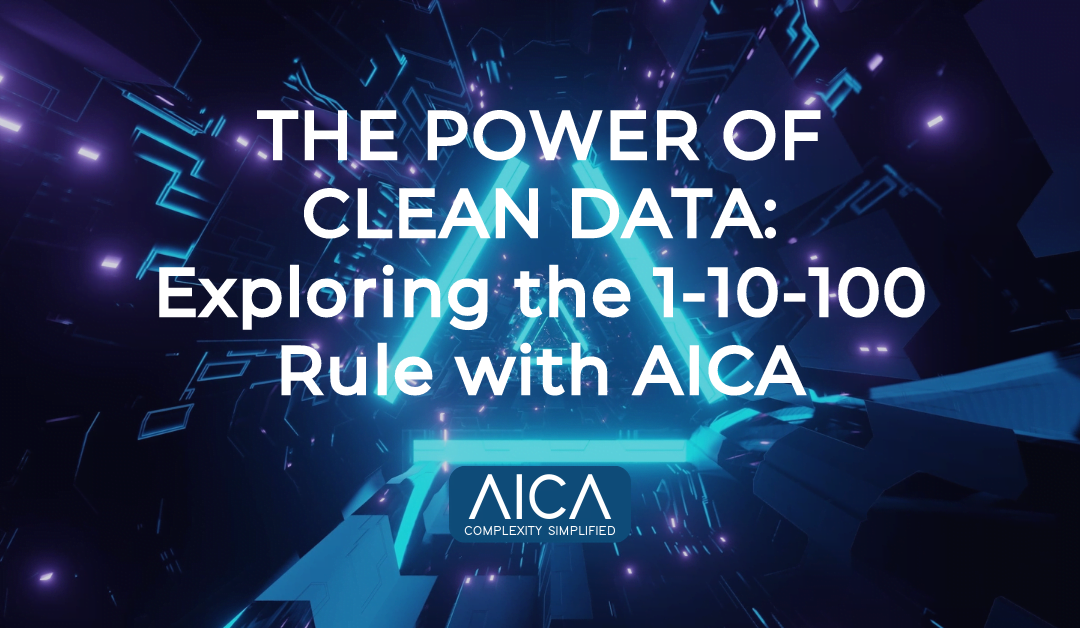In an age where data has become one of the most valuable commodities, the quality of this data has a profound impact on a business’s bottom line. Data inaccuracies, also known as “dirty data,” can lead to costly errors, inefficiencies, and misinformed strategic decisions.
This is where the 1-10-100 rule comes into play – a concept that businesses can leverage to understand the escalating costs of dirty data.
Understanding the 1-10-100 Rule
At its core, the 1-10-100 rule represents the cost implications of data management at different stages. Here’s how it works:
- 1: This represents the cost of preventing bad data from entering the system. It can entail proactive measures such as data validation checks, investing in a data quality tool, or creating robust data management protocols.
- 10: This depicts the cost of correcting the data once it’s entered the system but before it affects other processes. These costs could involve time spent troubleshooting, manual data corrections, or reprocessing data.
- 100: This is the cost of dealing with the consequences of bad data that wasn’t caught early enough. This includes indirect costs like poor decision-making based on inaccurate data, loss of customer trust due to data errors, and the resources spent rectifying these issues.
The 1-10-100 progression underscores the exponential increase in costs as an error moves further along the process. The key takeaway? It’s significantly cheaper to prevent dirty data at the onset than to correct or deal with its consequences later.
The Dirty Data Dilemma
Dirty data includes inaccuracies, duplications, missing fields, and outdated information. Its implications can be far-reaching, spanning from operational inefficiencies to inaccurate forecasting, which can directly impact a company’s profitability.
For example, if a manufacturer has inaccurate product data, it can lead to incorrect inventory management and poor customer experiences. Similarly, if a data analyst has incorrect data, they may forecast inaccurate trends, leading to misguided strategies and potentially costly business decisions.
AICA’s Role in the 1-10-100 Rule
AICA’s AI-powered services and tool offer a proactive solution to managing data quality. Here’s how we can help businesses adhere to the 1-10-100 rule:
– Preventing Dirty Data (Cost 1): AICA catches data inconsistencies from the get-go. By leveraging AI and Machine Learning algorithms, we can detect data discrepancies, mitigating the chances of dirty data seeping into your system.
– Correcting Data (Cost 10): We don’t just prevent dirty data, we also correct it! Using our technology you are able to automate the data cleansing process, making it quicker and less resource-intensive than manual methods.
-Avoiding Consequences of Dirty Data (Cost 100): By keeping your data clean from the start and correcting any errors that do occur quickly, we help businesses avoid the steep costs that can come from unchecked dirty data. This can result in more accurate decision-making, improved customer relationships, and an understanding of your business and inventory.
With AICA, businesses can ensure they’re always on the ‘1’ side of the 1-10-100 rule. By investing in data quality from the start, organizations can enjoy improved operational efficiency, make better-informed decisions, and ultimately drive more value from their data assets.
The 1-10-100 rule isn’t just a concept—it’s a persuasive argument for the importance of data quality in today’s digital age. With AICA’s robust data management solutions, your business can turn data into a powerful tool that drives growth and success.
